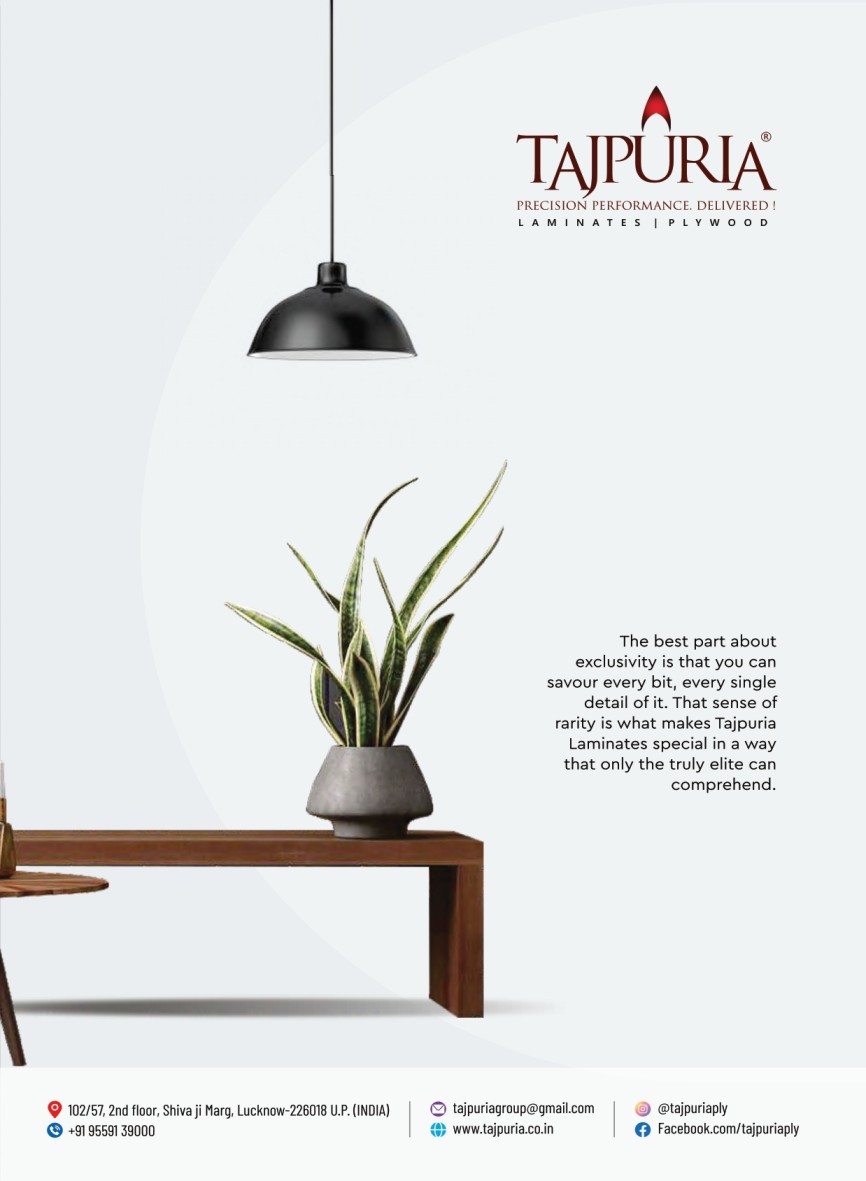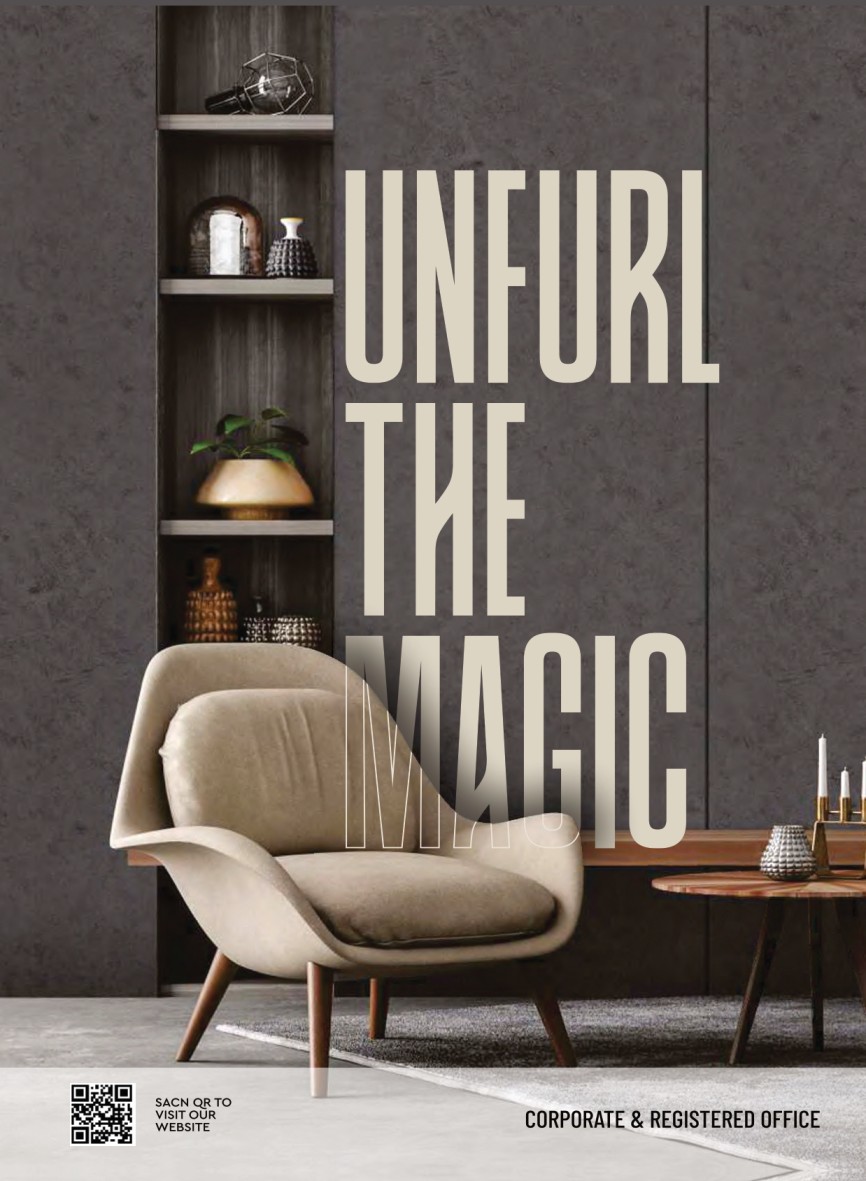
Unethical Competetion and Delayed Payment is Concern
- June 11, 2023
- 0
Status of the plywood Industry in Bihar
In the 1980s, plywood production mainly started in Bihar, primarily in Araria, Gulabbagh, and Patna. At that time, full core was utilized for manufacturing in the northeastern region of India, so fali core was brought here for the pasting units. Separate peeling units were established to obtain core for the production process. The peeling process was carried out using locally available wood, and the core was sent outside the state. Till the round logs was being imported, some individuals also started producing six-feet faces, which were prepared by sun drying process without using a dryer. The success of the industry here is a testament to the entrepreneurial skills of the people who managed to run it at a low cost and with the scarcity of local raw materials. The industry faced a setback when logging in the forests of the northeastern region was restricted. However, some people among them successfully established themselves in Yamunanagar. Currently, plywood is being produced using locally available wood, which have a moderate market for it.
What is the quality of the ply made from available wood?
The quality of the ply is assessed based on the available wood wherever plywood factories are established. The market for ply is also determined accordingly. In states like Uttar Pradesh, Rajasthan, West Bengal, Odisha, South India, Kerala, Karnataka, Andhra Pradesh, etc., we can observe that ply is made from different types of wood. However, ply made from poplar wood in Haryana, Punjab, and Uttar Pradesh have gained their own recognition. With the popularity of Safeda (Eucalyptus) in the past two decades and its cultivation spreading across India, the form of the ply is now going to change again. In the field of agriculture, new varieties such as Milia Dubiya are also becoming part of this industry in the coming years.
How is the local market?
Due to increasing competition, freight, in the marketing of ply and panels has become an important part of the business. Therefore, locally produced goods or products made nearby are naturally cheaper than those imported from outside. In addition to the convenience of procuring in small quantities, the ease of payment for both parties is also an important business activity.
How is the demand for products in the state?
In Bihar, products ranging from 6 to 19 mm are made from locally available wood. The majority of these products are consumed within the state itself. However, due to relatively competitive prices, there is also good demand for these products outside the state. The return freight of trucks being convenient, the rental cost for thinner goods ranging from 6 to 12 mm is also significantly reduced as more quantity of goods can be loaded. This is an additional benefit for us. Industries that comply with regulations and operate in an organized manner don’t face any difficulty in sending goods outside the state. In fact, doing so provides some relief from local competition. Having our own methods of marketing and maintaining good relationships with distributors is also important.
How do you compete with other states?
The prices of wood in northern India are touching their highest levels, which is currently providing us an additional benefit. Certainly, when the prices of wood will decrease or stabilize there, the prices of products will once again become competitive. And then we will face the challenge once again. This is a part of the business. However, it is likely that the current scenario will continue for a considerable amount of time, as estimated by experienced industrialists.
How is the availability of timber?
For us, the main source of core is the peeling units located near Muzaffarpur, which have gradually upgraded themselves by bringing in old machinery from other regions and establishing plywood units. Now, there is a significant production of plywood there as well. This has increased competition in the region. The problem is unethical competition. Due to the oversight of the Forest Department and local administration, these units are overlooked for the regular restrictions and regulations. However, there is also a difference that such industries have to sell their products in the local market, and they also bear the burnt of it. But overall, it is negative for the overall market to function properly. This increases the cost of production for industries that are trying to operate in accordance with the regulations.
What is the future of timber?
We have also started to face shortage of timber. It takes six to eight years for the main source of simbal wood to mature. There is no new plantations. The increasing establishment of new units in Muzaffarpur is putting pressure on wood availability. Land near Patna is also expensive, making plantation relatively difficult. Nonetheless, efforts are underway to find a way forward. We will have to negotiate with farmers for rates because there is no minimum support price for wood. When there is an abundance of wood, everyone tries to buy it at a lower price, which creates disappointment among farmers. Therefore, farmers need to be given guarantee on rates. They need to be assured that they can earn as much money from wood cultivation as they can from other crops. Plantation must be done through discussions with farmers. It is necessary to explore varieties that mature quickly, departing from traditional methods and working with modern techniques and species for plantation. Efforts will be more successful where land is available at a lower cost. If an industrialist can grow 25 to 30 percent of the wood they need, it will help them in the future challenging times. This is a significant need at the moment.
Payment situation in the market
After COVID, it has become a common practice for many distributors to delay payments repeatedly, which causes disruptions in business. The problem is that most factory owners are reluctant to take stringent measures to recover their dues from the market. They expect that the association should make efforts at their association’s level to recover their money. Dealers who default should be denied further supplies, but no initiative is taken in this direction. There is a need to change this mindset. The most important thing today is that we need to unite. These issues are extensively discussed in meetings, but afterwards, everyone becomes quiet. Even when it comes to increasing or decreasing rates, all industrialists cannot reach a consensus. Everyone has their own priorities.
अनैतिक प्रतिस्पर्धा और बिलंबित भुगतान चिंताजनक
बिहार में प्लाईउड उद्योग की स्थिति
1980 के दशक में मुख्यतः अररिया, गुलाबबाग के अलावा पटना आदि कुछ जगहों में प्लाई बनने की शुरूआत हुई थी। उत्तर पूर्व भारत में तब फूलकोर से माल बनाया जाता था, तो वहां से फाली मंगाकर यहां पेसिं्टग यूनिटें लगी। यहां उपलब्ध लकड़ी के लिए पीलिंग अलग से ही लगी हुई थी, जिनकी कोर राज्य से बाहर ही जाती थी। जब तक गर्जन लकड़ी आयात होती थी, तो कुछ लोगों ने छह फीट का फेस बनाना भी शुरू किया था, जो ड्रायर के बगैर, धुप में सुखाकर ही तैयार कर लिया जाता था। कम लागत में और स्थानिय कच्चे माल के अभाव में भी, उद्योग को सफलतापूर्वक चलाना यहां के उद्यमियों की कार्यकुशलता दर्शाता है। उत्तर पूर्व में वनों की कटाई पर रोक लगने से उद्योग की गति पर विराम लग गया। हालांकि इसमें से कुछ ने अपने आपको यमुनानगर में सफलतापूर्वक स्थापित किया। अब स्थानीय उपलब्ध लकड़ी से ही प्लाई बना रहें है, जिसका एक नियंत्रित बाजार है।
उपलब्ध लकड़ी से बनी प्लाई की क्वालिटी कैसी है ?
जहां जहां भी प्लाइउड के कारखाने लगे हैं, वहां पर उपलब्ध लकड़ी से ही वहां की प्लाई की क्वालिटी का आकलन होता है। उसी हिसाब से उसका बाजार भी बनता चला जाता है। उत्तर पूर्व, राजस्थान ,प. बंगाल, उड़ीसा, दक्षिण भारत में केरल, कर्नाटक, आंध्र प्रदेश आदि सभी प्रदेशों में हम देख रहें है कि अलग-अलग किस्म की लकड़ी से प्लाई बनती है। अलबत्ता हरियाणा, पंजाब और उत्तर प्रदेश में पोपलर से बनी प्लाई ने अपनी अलग पहचान बनाई हुई है। पिछले डेढ दो दशक से सफेदा के प्रचलन में आने से और इसकी खेती का प्रसार, संपूर्ण भारत में होते चले जाने से प्लाई का स्वरूप अब फिर बदलने वाला है। अब तो कृषि वानिकी में कई और नई किस्में जैसे मिलीया डूबिया भी अगले कुछ वर्षों में इस उद्योग का हिस्सा बनने जा रही है।
स्थानीय बाजार कैसा है?
प्रतिस्पर्धा के लगातार बढ़ते चले जाने से प्लाई और पेनल की मार्केटिंग में किराया एक महत्वपूर्ण हिस्सा हो गया है। इसलिए स्थानीय या आस पास बने हुए उत्पाद स्वाभाविक रूप से बाहर से मंगाए गए उत्पादों से सस्ते होते है। इसके अलावा छोटी खेप (थोड़ी मात्रा) में मंगाने की सुविधा के अलावा, भुगतान में दोनों पक्षों की सहुलियत, भी काफी महत्वपूर्ण व्यवासायिक गतिविधि है।
राज्य के उत्पादों की मांग कैसी है?
बिहार में उपलब्ध लकड़ी से 6 से 19 उउ तक का उत्पाद बनाया जाता है। उस का भी अधिकतम हिस्सा राज्य में ही खप जाता है। अपेक्षाकृत रूप से कीमतें चुनौतिपूर्ण होने की वजह से राज्य के बाहर भी इनकी अच्छी मांग है। ट्रकों का वापसी किराया काफी सुविधाजनक होने से, 6 से 12 उउ तक के पतले माल में किराया भी काफी कम हो जाता है, क्यों कि माल अधिक भरा जा सकता है। इसका भी हमें अतिरिक्त फायदा मिल रहा है। जो उद्योग नियम कायदे और व्यवस्थित तरीके से चल रहें है, उन्हें राज्य से बाहर माल भेजने में कोई परेशानी नहीं है। बल्कि ऐसा करने से स्थानीय प्रतिस्पर्धा से कुछ राहत ही मिलती है। मार्केटिंग के अपने तौर तरीके और वितरकों से सौर्हाद पूर्ण संबंध का अपना महत्व तो है ही।
अन्य प्रातों से प्रतिस्पर्धा कैसे कर पाते हैं?
उत्तरी भारत में लकड़ी की कीमतें अपने उच्चतम स्तर को छू रही हैं, इसका हमें वर्तमान में एक अतिरिक्त लाभ मिल रहा है। निश्चित ही जब वहां पर लकड़ी की कीमतें नीचे आएंगी या स्थिर होंगी, वहां भी उत्पाद की कीमतें फिर से प्रतिस्पर्धात्मक हो जाएगी। और तब हमारे लिए फिर से चुनौती होगी। यह तो व्यापार का हिस्सा है। लेकिन वत्र्तमान परिदृष्य अभी काफी समय तक ऐसा ही बने रहने की संभावना है।जैसा कि अनुभवी उद्योगपतियों का अनुमान है।
लकड़ी की उपलब्धता कैसी है?
हमारे लिए कोर का मुख्य स्त्रोत मुज़फ्फरपुर के आस पास लगी हुई पीलिंग इकाइयां हैं, जिन्होंने धीरे-धीरे दुसरे क्षेत्रों की पुरानी मशीनों को लाकर पेस्टींग यूनीटें स्थापित कर, अपने आपको अपग्रेड कर लिया है। अब वहां भी काफी मात्रा में प्लाइउड का उत्पादन हो रहा है। इससे इस क्षेत्र में प्रतिस्पर्धा काफी बढ़ गई है। समस्या है ,अनैतिक प्रतिस्पर्धा का। वन विभाग और स्थानीय प्रशासन द्वारा अनदेखा करने की वजह से इनके उपर नियम और कानून के प्रतिबंध, नहीं के बराबर है। हालांकि एक फर्क भी है, कि ऐसे उद्योगों को अपना उत्पाद, स्थानीय बाजार में ही खपाना पड़ता है, जिसका खामियाजा भी उन्हें भुगतना पड़ता हैं। लेकिन कुल मिलाकर, बाजार के सुचारू रूप से चलने में यह नकारात्मक तो है ही। इससे उन उद्योगों के उत्पादन की लागत बढ़ जाती है, जो नियमानुसार उद्योगों को चलाने की कोशिस कर रहे हैं।
लकड़ी का भविष्य क्या होगा?
हमारे यहां भी लकड़ी की दिक्कत आनी शुरू हो रही है। मुख्यतः उपलब्ध सिंबल के पेड़ को तैयार होने में छह से आठ साल लग जाते हैं। नया पौधा रोपण नहीं हो रहा है। मुजफ्फरपुर में नयी यूनिटों के बढ़ते चले जाने से लकड़ी पर दबाव बढ रहा है। पटना के आस पास यूं भी जमीन महंगी है। इसलिए पौधा रोपण अपेक्षाकृत मुश्किल है। फिर भी रास्ता निकालने की कोशिस जारी हैं। किसानों से रेट को लेकर समझौता करना होगा, क्योंकि लकड़ी का न्यूनतम समर्थन मूल्य तो है नहीं। जब लकड़ी ज्यादा आ जाती है तो सस्ते में लकड़ी खरीदने की कोशिश सभी की होती है। जिससे किसानों में निराशा पैदा होती है। इसलिए किसानों को रेट की गारंटी देनी होगी। यह विश्वास देना होगा कि जितना पैसा वह दुसरी फसल से उगा रहा है, उतने ही पैसे उसे लकड़ी की खेती से मिल सकते हैं। किसानों से बातचीत करके पौधा रोपण तो करना ही होगा। इस तरह की किस्मों की खोज करनी होगी, जो जल्दी तैयार होती है। पारंपरिक तरीके को छोड़कर, पौधारोपण के लिए आधुनिक तकनीक और किस्म पर काम करना होगा। जहां जमीन सस्ते में मिल रही है, वहां प्रयास अधिक सफल होगा। यदि कोई उद्योगपति अपने लिए 25 से 30 प्रतिशत भी लकड़ी उगा लेता है, तो वह आने वाले मुश्किल समय से बच सकता है। यह इस वक्त की बहुत बड़ी जरूरत है।
बाजार में भुगतान की स्थिति
कोविड के बाद अब कई वितरकों की आदत हो गई है कि वह बार बार पैसे रोक रहे हैं। जिसकी वजह से व्यापार में बार बार रूकावट आती है। दिक्कत यह भी है कि अधिकतर फैक्ट्री संचालक, बाजार से अपना बकाया निकालने के लिए भी, कड़ाई बरतने में अनिच्छुक हैं। उनकी सोच होती है कि एसोसिएशन उनके लिए, अपने स्तर पर ही पैसा निकालने का प्रयास करे। जो डीलर डिफाल्टर है, उसे माल देना बंद होना चाहिए, लेकिन इस दिशा में कोई पहल नहीं करता। इस सोच को बदलने की जरूरत है। आज सबसे बड़ी बात तो यह है कि हमें एकजुट होना होगा। मीटिंग में तो इन विषयों पर खूब चर्चा होती है, लेकिन बाद में सभी शांत हो जाते है। यहां तक कि रेट बढ़ाने या घटाने को लेकर भी सभी उद्योगपति एकमत नहीं हो पाते। सभी की अपनी अपनी प्राथमिकताएं है।
[/vc_column_text][/vc_column][/vc_row]






























































